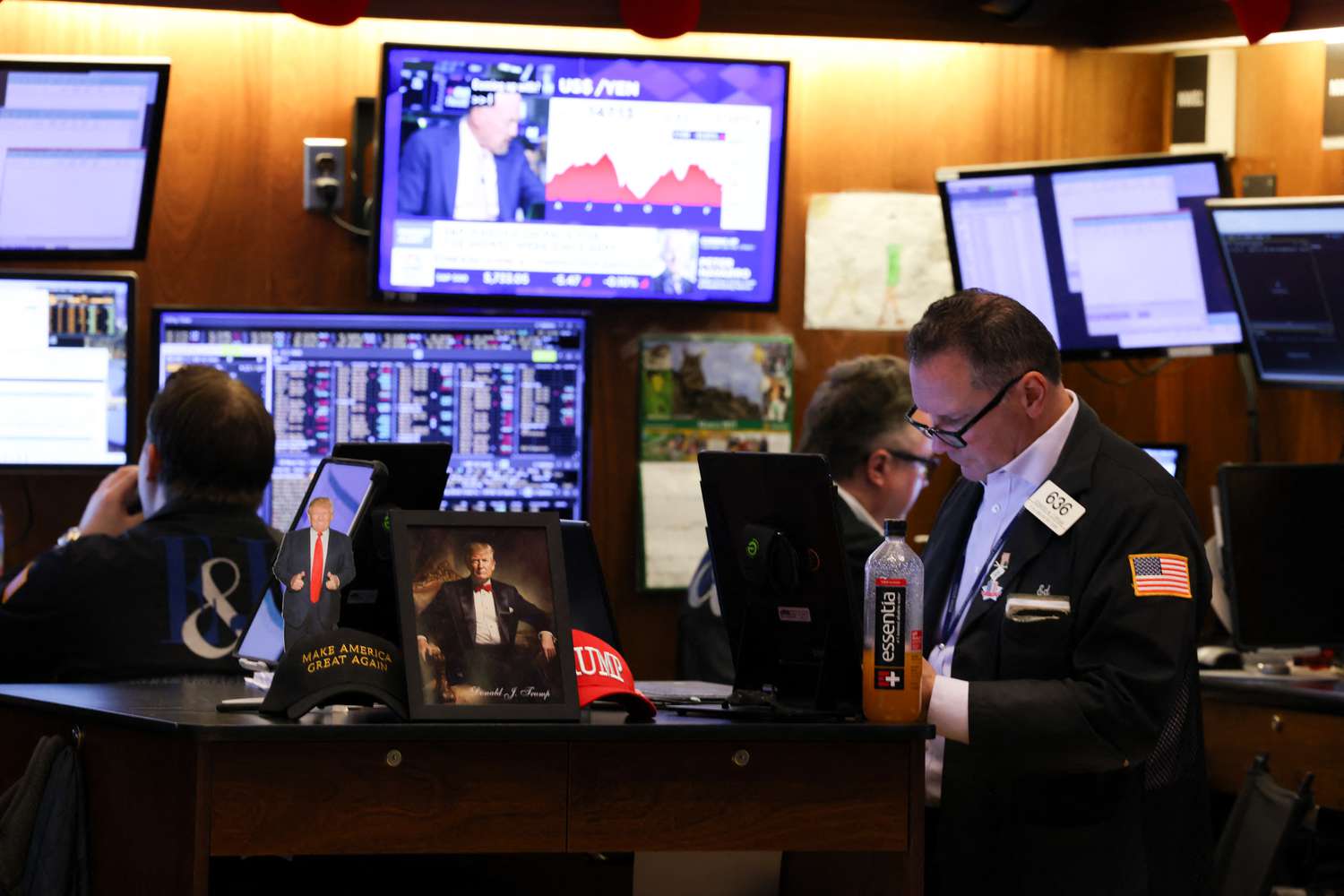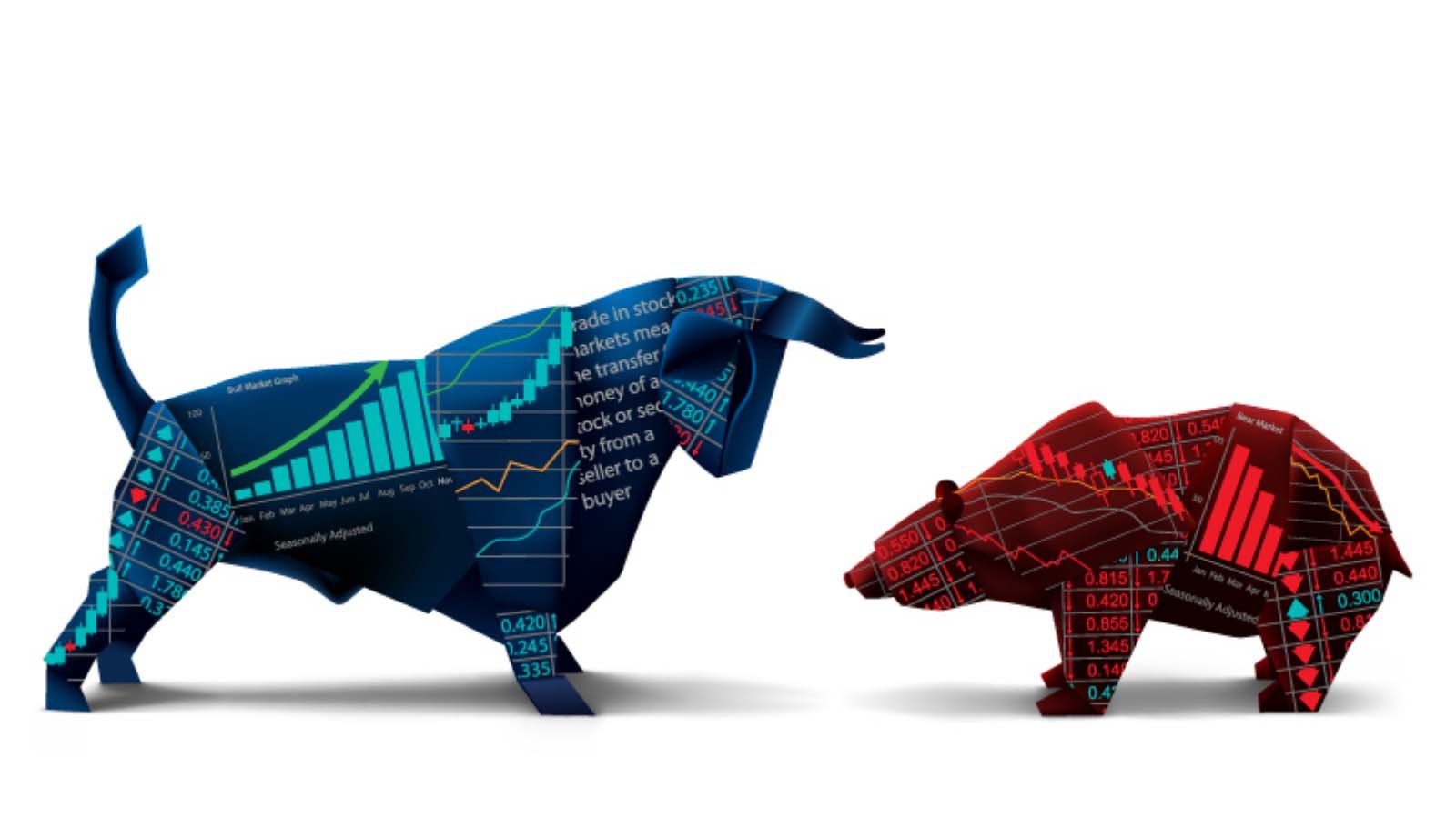Markets Fall as Tariff Fears Deepen

Assessing the “fairness” of tariffs … Bitcoin keeps falling; the level to watch … why the Strategic Bitcoin Reserve didn’t help … a spat among the Mag 7s
As I write Monday mid-afternoon, the markets are a sea of red. The Nasdaq leads the way, down more than 4%.
Behind the crash is the fear of a recession triggered by President Trump’s tariff policy.
Here’s The Wall Street Journal:
President Trump over the weekend refused to rule out the U.S. entering a recession this year, telling Fox News there will be a “period of transition, because what we’re doing is very big.”
Now, though Commerce Secretary Howard Lutnick said, “There’s going to be no recession in America,” investors don’t feel reassured.
Tariffs are at the heart of Trump’s economic plans…and the market’s bewilderment
For an illustration, let’s go to Trump last Friday:
Canada has been ripping us off for years on tariffs for lumber and for dairy products. 250% — nobody ever talks about that — 250% tariff — which is taking advantage of our farmers.
So that’s not going to happen anymore.
Trump went on to say that he may soon implement reciprocal tariffs on Canadian lumber and dairy products.
Back to Trump:
They’ll be met with the exact same tariff unless they drop it, and that’s what reciprocal means.
And we may do it as early as [last Friday], or we’ll wait till Monday or Tuesday, but that’s what we’re going to do. We’re going to charge the same thing. It’s not fair.
This brings up something we should wrestle with…
What “fair” means
If tariffs are placed on Canadian lumber and dairy, it will make those imports more expensive.
U.S. producers can take advantage by selling their goods at higher prices (though still lower than Canadian prices) without as much competition from cheaper Canadian products.
This is great for U.S. dairy and lumber manufacturers – not so great for the U.S. consumers who are now paying higher prices.
Is that fair?
Remember, the U.S. consumer is responsible for about 70% of our GDP. Meanwhile, my back-of-the-napkin calculation of the size of the U.S. dairy and lumber industries clocks in at less than 4% of our GDP.
Perhaps the better question isn’t “what is fair?” but rather “to whom do we want to be fair?”
The economic risk of “cutting off our nose to spite our face”
A leading political/economic theory holds that beneath Trump’s bluster, he’s using tariffs purely as a negotiating tool to force other countries to bring down their levies on U.S. exports.
If this is the case, great. Let’s use them selectively, briefly and then be done with it.
But as we noted in Friday’s Digest, the longer that Trump uses, or even threatens to use tariffs, the greater the risk of stagflation.
Trump’s on-again-off-again tariffs makes it difficult for corporate planners, so they’re pushing off capital investments and hiring decisions. This slows the economy and the velocity of money, threatening low/no-growth (i.e., the “stagnant” part of stagflation).
Trump appears unmoved by C-suite managers asking for clarity. Here’s CNBC from this morning:
President Donald Trump has dismissed the growing chorus of CEOs, investors and policymakers who are pleading with the White House for greater clarity about his sweeping tariff agenda.
“They always say that. ‘We want clarity,’” Trump said in a Fox News interview that aired Sunday.
“They have plenty of clarity.”
As to the “inflation” part of stagflation, consumers appear to be increasingly worried about the impact of tariffs on prices.
Here’s the Federal Reserve Bank of Richmond last week:
In February 2025, households’ inflation expectations over the next 12 months rose for the third straight month. They now sit at 4.3 percent, which is the highest mark since November 2023…
Worryingly, longer-run inflation expectations rose to 3.5 percent in February, the highest mark in nearly 30 years (April 1995).
Inflation fears risk fueling the attitude of “buy it now before the price rises!” which, unfortunately, serves as a self-perpetuating feedback loop, creating the exact higher prices that are feared.
Meanwhile, there’s a lurking question…
What if Trump’s tariffs don’t prompt the desired foreign tariff reductions, but instead, stoke indignant tariff increases? (Which, so far, has been the case.)
Then we enter a game of economic “chicken” between Trump and foreign leaders with the respective economies as potential collateral damage.
Trump claims tariffs are already having the desired result, spurring new manufacturing jobs. From Trump:
We created almost 9,000 new jobs in the auto production field. And the reason for that is largely they think things are happening so they’re already geared up.
While this is great for the individuals who land those 9,000 new jobs, if the cost of that job creation is higher auto prices for the tens of millions of American consumers – and a recession – is that fair?
Bottom line: We’d love to see a more balanced trade deficit, but not if the cost is a recession and a bear market.
On that last note, as noted at the top of today’s Digest, the market is deep in the red as I write Monday near lunch. For investors hoping that Trump might see this and course correct, this appears unlikely.
Among his comments in recent days, Trump had the following to say about stocks:
Look, what I have to do is build a strong country. You can’t really watch the stock market.
If you look at China, they have a 100-year perspective. We go by quarters. And you can’t go by that.
Despite this, the chances of a bullish mean reversion rally are growing. We’re going to dive into that in tomorrow’s Digest.
But in the meantime, stick with your investment plan. That means abiding by your pre-appointed stop-losses…yet also looking for great buying opportunities that are on sale as other investors panic.
Crypto investors are feeling deflated
Last Friday, President Trump signed an executive order to create a Strategic Bitcoin Reserve. Funding this reserve will be Bitcoin seized in criminal and civil forfeiture cases.
The executive order also establishes a U.S. Digital Asset Stockpile which will hold other confiscated cryptocurrencies. In a post on Truth Social, President Trump wrote that this stockpile will include ether, XRP, Solana’s SOL token, and Cardano’s ADA token.
So, why isn’t the market more bullish?
Because many in the crypto community wanted a more ringing endorsement from the government.
Here’s TD Cowen’s Jaret Seiberg:
We view this as a compromise.
The government is not spending taxpayer dollars to acquire new digital assets. It is simply not selling the ones that it seizes …
We are dubious that government will be acquiring additional bitcoin for the reserve despite the President’s instructions as we believe it will be politically tough to show how purchases are budget neutral and do not impose incremental costs of taxpayers.
To clarify, Trump’s order keeps open the possibility of the government buying Bitcoin. However, according to a factsheet from the White House, such purchases must be “budget-neutral” and “impose no incremental costs on American taxpayers.”
With the market now recognizing that the U.S. government isn’t about to go on a Bitcoin shopping spree, this leaves Bitcoin lacking a new bullish catalyst.
This gives bears room to drive Bitcoin lower, which they’re doing. As I write, the crypto is struggling to hold $80,000.

Source: TradingView
From a technical perspective, we’re nearing a “must hold” level
Last week, when Bitcoin traded below $85,000, our crypto expert Luke Lango wrote the following to his Crypto Trader subscribers:
Right now, Bitcoin is caught between two major technical levels:
- It’s holding its 50-week moving average—historically, the final line of defense in past boom cycles.
- It has lost its 25-week moving average—a warning sign seen before previous tops.
If Bitcoin reclaims $85,000, the bull market could surge back with a vengeance.
If Bitcoin breaks below $75,000, it could signal the start of a new crypto winter.
Since then, Bitcoin briefly retook $85,000, but as just noted, it’s now threatening to lose $80,000.
For now, Luke recommends just watching. This is neither the time to bail or buy. As he writes to his subscribers, “we’ll let the market tell us what’s next.”
To join Luke in Crypto Trader for timely updates as well as the specific altcoins he’ll recommend if/when bullish spirits return, click here.
Finally, there’s some trash talk breaking out between the AI big dogs
In February, Microsoft announced it created a new state of matter (as Big Tech races toward creating quantum computing).
Amazon isn’t having it.
From Quartz:
Amazon’s head of quantum technologies, Simone Severini, told chief executive Andy Jassy that the company’s scientific paper “doesn’t actually demonstrate” its claims — only that the new chip “could potentially enable future experiments,” Business Insider reported, citing a copy of Severini’s email obtained by the publication.
Severini also reportedly told Jassy that Microsoft has had “several retracted papers due to scientific misconduct” in quantum computing, and that the company has previously had to withdraw some of its research.
To be fair, Amazon isn’t an impartial bystander. It’s also pursuing quantum computing leadership.
Here’s legendary investor Louis Navellier with more details:
Amazon made its own splash with the Ocelot quantum chip on February 27.
This experimental model uses five “cat qubits,” a newer qubit technology that stores quantum information inside a microwave cavity, rather than on superconducting circuit as a transmon qubit does.
Its feline name comes from the famous Schrödinger cat, a thought experiment suggesting a cat in a box can be both dead and alive until someone looks inside. Cat qubits store information in a similarly confusing quantum state.
I must emphasize that cat qubits are still experimental… and they’re not guaranteed to work at larger scales.
But their potential is enormous.
If this all reads like Greek, don’t worry. We’re not about to dive into the details of quantum physics. But there is a budding investment opportunity emerging in quantum computing that’s important to highlight.
As we’ve been covering in the Digest over the last few days, this Thursday at 1 PM Eastern, Louis is holding an exclusive briefing: The Next 50X NVIDIA Call.
He’s going to dive into why quantum computing is an AI gamechanger on a scale we haven’t seen yet – both from a technological and wealth-building perspective.
He’ll also tell you more about his top quantum pick; it’s a small-cap stock protected by 102 patents with close ties to NVIDIA.
Now, we should quickly answer an obvious question – with NVIDIA being mentioned, why not just invest in it to ride quantum computing?
Well, Louis is doing that. But not just that.
Here he is explaining:
Chipmakers like Nvidia Corp. (NVDA) know that quantum computing is an existential threat to [chipmakers’] dominance. Traditional electricity-based chips have trouble with complex tasks like 3D modeling and encryption. Quantum chips might solve these problems in the blink of an eye.
That’s why firms like Nvidia are quietly funneling billions of dollars into quantum computing startups. They realize they can’t afford to miss out on the world’s next greatest technology.
On Thursday, Louis will dive into all these details, as well as prep you for NVIDIA’s first ever “Quantum Day,” or “Q Day,” as Louis calls it.
Q-Day comes one week from Thursday on March 20. Here’s Louis with the significance:
At that event, Nvidia is poised to ignite the next phase of the quantum investing cycle.
I expect them to announce a new breakthrough technology that could light a fire under the shares of one of its “Q” partners… a stock 1,000 times smaller than Nvidia.
To tell you all about it, I’m hosting an urgent video briefing on Thursday, March 13, at 1 p.m. ET… exactly one week before Nvidia’s announcement… because I want to get you ahead of the crowd.
To join Louis, click here to register.
We’ll keep you updated on all these stories here in the Digest.
Have a good evening,
Jeff Remsburg





































